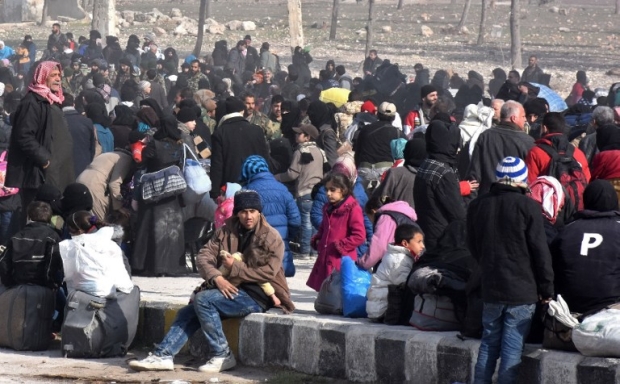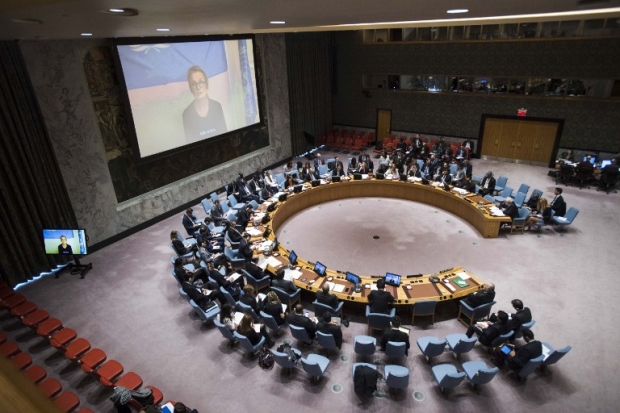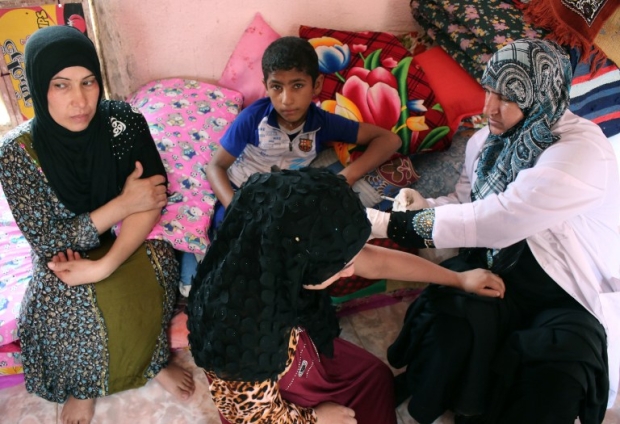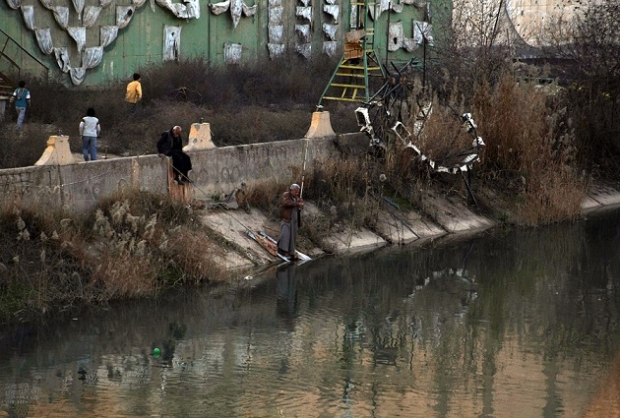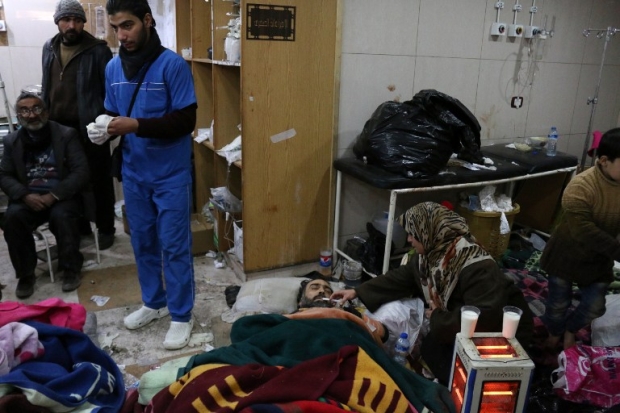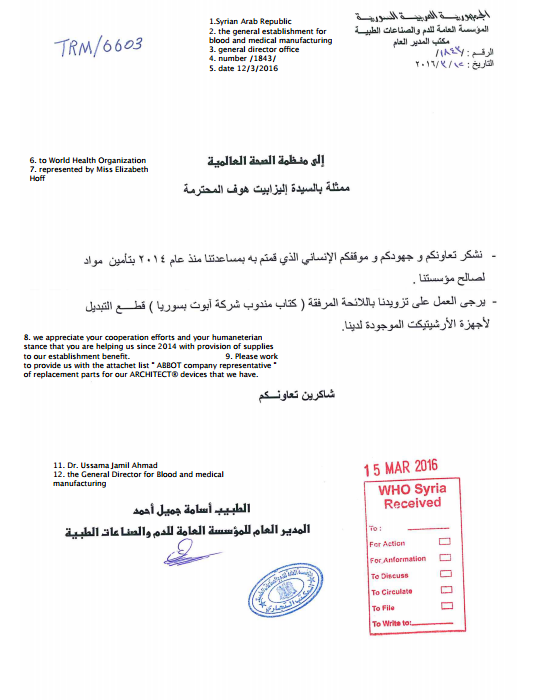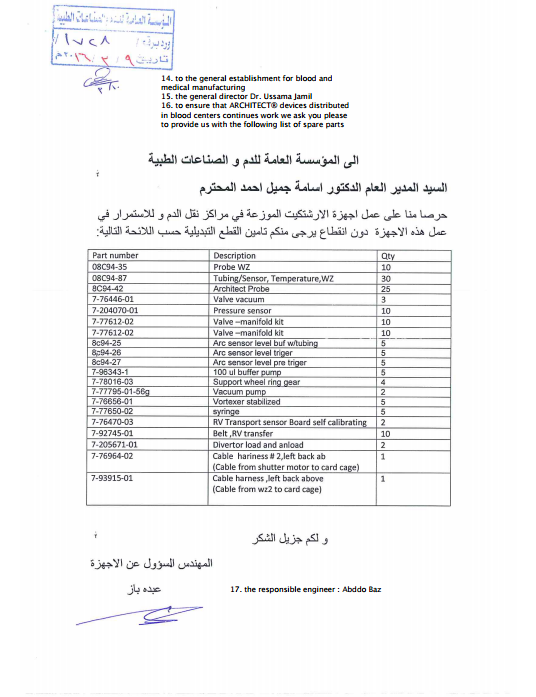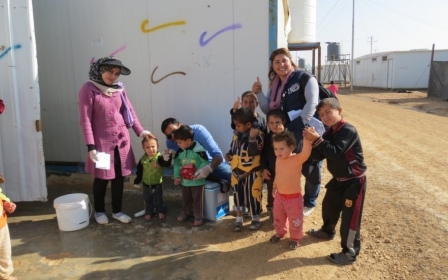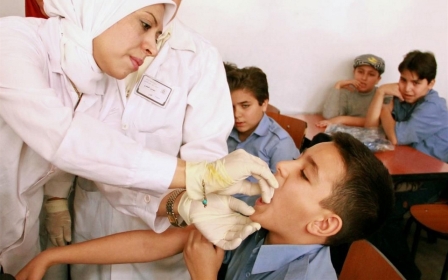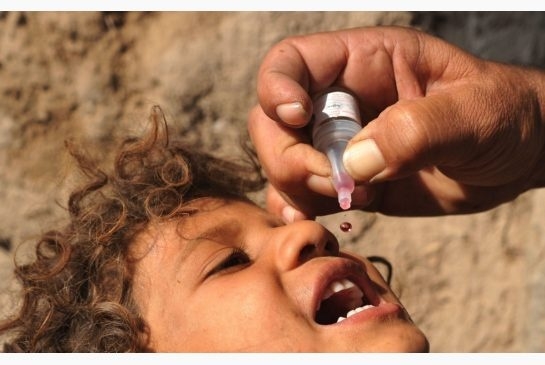
How a UN health agency became an apologist for Assad atrocities
For years now, the World Health Organisation (WHO) has been fiddling while Syria burns, bleeds and starves. Despite WHO Syria having spent hundreds of millions of dollars since the conflict began in March 2011, public health in Syria has gone from troubling in 2011 to catastrophic now.
To put this in perspective, while life expectancy for someone born in the United States has risen half a year from 78.7 years in 2010 to 79.3 years in 2015, over the same time period in Syria, it has plummeted more than 15 years from 70.8 years in 2010 to 55.4 years in 2015.
This new and devastating figure is comparable with South Sudan (57.3) and considerably lower than Afghanistan (60.5), Rwanda (66.1), and Iraq (68.9) while disturbingly, the global average life expectancy for babies born in 2015 is 71.4 years, baby boys in Syria can expect to live just 48 years, baby girls, 65 years.
Even Haitian babies can expect to live an average of 63.5 years, despite two centuries of political turmoil and the worst rates of infectious diseases such as HIV and cholera in the Western hemisphere.The reason for Syria’s plummeting public health can be illustrated by the final, devastating fall of eastern Aleppo.
Systematic bombing
Like the residents of Mouadamiya, Homs and Darayya before them, the last quarter million civilians of eastern Aleppo and 10,000 members of militia succumbed after months of siege on top of years of systematic targeting of civilian homes, hospitals, schools and shops using missiles, barrel bombs, chemical attacks, bunker busters, incendiary weapons and cluster munitions.
The main attackers have been the Syrian government of Bashar al-Assad and its principle allies, Russia mainly from the air, with support on the ground from Iran and Hezbollah.
Tens of thousands of civilians were evacuated from eastern Aleppo to the western Aleppo countryside and Idlib governorate, both still controlled by opposition groups such as Ahrar al-Sham (the major rebel force) and Jabhat al-Nusra (the al-Qaeda affiliate until it recently rebranded itself, claiming it had parted ways with the group).
Such dislocation only exacerbates the health crisis faced by roughly 2.5 million civilians in Idlib – those displaced and their host communities – and the half-million plus in opposition-controlled parts of western Aleppo. And that’s not even counting the additional four million civilians living in other opposition-held areas, more than one million of which live in areas still besieged by the government.
Yet WHO Syria has been anything but an impartial agency serving the needy. As can be seen by a speech made by Elizabeth Hoff, WHO’s representative to Syria, to the UN Security Council (UNSC) on 19 November 2016, WHO has prioritised warm relations with the Syrian government over meeting the most acute needs of the Syrian people.
READ: WHO's response to Dr Annie Sparrow's piece on its work in Syria
Reflecting this misprioritisation, Hoff’s presentation was rife with inaccuracies, scanty on facts, and deeply skewed to favour the Syrian regime. This bias can be illustrated by three particularly disturbing parts of her presentation.
Misrepresentation of infectious diseases
First with respect to infectious diseases - a matter of global concern because germs do not respect borders - Hoff spun the Syrian government’s efforts positively while concocting a central life-saving role for her WHO office. She claimed that before the conflict, “national vaccination coverage rates were 95 percent” but now, “almost six years later… vaccination coverage rates have dropped by half”.
Hoff’s endorsement of the government’s inflated vaccination claims help cover up its politicisation of this fundamental form of health care
She also testified to the Security Council that polio, a life-threatening childhood illness that re-emerged in Syria in 2013 after being eliminated in 1995, was “re-eradicated thanks to concerted efforts by WHO and UNICEF”.
In fact, although the Syrian government insist that the national polio vaccination coverage rate for 2009 and 2010 was 99 percent, WHO and UNICEF estimate that it was only 83 percent – and even this figure was accorded their lowest grade of confidence due to the lack of supporting data. These estimates and the contrasting “official figures,” are cited in WHO and UNICEF’s 2013 Global Polio Eradication Initiative Strategic Plan for Polio Elimination in the Middle East.
Hoff’s endorsement of the government’s inflated vaccination claims help cover up its politicisation of this fundamental form of healthcare. More to the point, though Hoff may not know it given her lack of medical expertise, if national coverage rates had really been as high “before the conflict” as she and the Assad government insist, polio would never have re-appeared in 2013.
That is because the spread of polio requires herd immunity – the protection conferred on the whole population when immunisation coverage reaches a critical threshold - to drop below 80-86 percent. It would take well over three years for herd immunity to drop from “99 percent” to anywhere approaching this level, particularly given the concomitant drop in the crude birth rate and fertility.
Moreover, Hoff associates the risk of polio and other crippling and deadly diseases to unvaccinated children with the conflict. This rationalisation that polio is the result of conflict - reflected as well in WHO’s 2014 report “Polio: War in Syria opens the door to an old enemy” - is often repeated by the Syrian government. But blaming conflict by itself is lazy, and wrong.
Polio did not reappear in Iraq throughout the entire eight years of the Iraq war (2003-2011), yet broke out in Syria after a mere two years of war - and then spread to Iraq, almost certainly as a result of the forced displacement of civilians from northeastern Syria.
All cases of polio in Syria broke out in areas that had long been opposed to the Assad regime, reflecting the political dimension of the outbreak.
Not a single case occurred in territory controlled by the government. In Deir Ezzor, where polio first re-appeared in 2013, polio vaccination coverage had dropped to 36 percent. This was a man-made outbreak. Hoff ignored all of this.
Polio cover-up
When polio did reappear in July 2013, the Syrian Ministry of Health hid it for months, insisting that its Early Warning Alert and Response System, set up in September 2012 with the technical help and sole financial support of WHO, was reliable.
Then, in the first week of October 2013, samples from a cluster of crippled children in Deir Ezzor smuggled cross-border for analysis in Turkey were also sent to the National Lab in Damascus.
Damascus first insisted that the samples were contaminated, then that they showed Guillain-Barre syndrome, even though this syndrome is determined by clinical diagnosis, not by a laboratory test.
Hoff’s claim that polio was 're-eradicated thanks to concerted efforts by WHO and UNICEF' is a breathtakingly outrageous attempt to rewrite history
Only in October 2013, did the Syrian Health Ministry concede that an outbreak of polio was underway after undeniable laboratory proof was provided through the coordinated efforts of doctors working inside conflict areas, the opposition-supported Assistance Coordination Unit (ACU), the Turkish government, and the US Centers for Disease Control (CDC).
Hoff’s claim that polio was “re-eradicated thanks to concerted efforts by WHO and UNICEF” is a breathtakingly outrageous attempt to rewrite history and take credit where none is due.
In fact, as noted, WHO had nothing to do with the discovery or containment of the polio outbreak, toeing the government line during the critical early stages of the polio outbreak, denying the re-emergence of polio for months, and endorsing the government’s surveillance system as it failed to detect the outbreak.
Only after independent proof made denial impossible did WHO finally acknowledged polio’s reappearance in Syria on 29 October 2013, the day after the Syrian Health Ministry did.
As for containing the polio outbreak, credit belongs to the independent Polio Control Task Force (PCTF), a group of Syrian and international health NGOs formed to address the polio emergency in the absence of effective government, with a network of 8,000 volunteers across northern governorates.
It was supported by the Turkish government, which helped it to purchase vaccines independently of WHO and its UN sister organisation, UNICEF. Without WHO’s or UNICEF’s assistance, the PCTF vaccinated 1.4 million children over the course of eight separate vaccination campaigns conducted in seven governorates, achieving a coverage rate of 92 percent. That stopped polio in its tracks.
The PCTF was supported in this effort not by WHO or UNICEF, which the Syrian government prohibited from taking part, but by the International Rescue Committee (IRC), the International Medical Corps (IMC), and the Turkish and French governments.
Hoff’s self-congratulation for a campaign that WHO was barred from supporting by the same government that created the conditions that made polio’s return possible, also fails to mention the many medical staff and volunteers who lost their lives during this vaccination campaign as a result of the targeted air strikes of the Assad regime’s air force.
READ: WHO's response to Dr Annie Sparrow's piece on its work in Syria
Further, WHO’s reliance on the government’s limited and politicised public health surveillance and reporting extends beyond polio.
Killing medics, bombing hospitals
In Cholera in the time of war, published by the British Medical Journal of Global Health in October 2016, my colleagues and I describe similar problems with respect to cholera - another disease that reflects both the pre-war neglect and the subsequent deliberate war-time destruction of the public health system in opposition areas.
The Syrian government suppressed most information about a cholera epidemic that broke out in 2009 as well as cholera deaths of several children that occurred in October 2015.
The second troubling aspect of Hoff’s testimony in November concerns her mention of “the repeated attacks on healthcare facilities in Syria”.
Of the 768 medics killed during this period as documented by PHR, 713 were killed by the Syrian and Russian government forces
She cited a figure of 126 such attacks between January and September 2016, yet fails to note that the chief perpetrator of these attacks was the Syrian regime, joined by its Russian ally.
According to Physicians for Human Rights (PHR), of some 400 attacks on 276 separate healthcare facilities between March 2011 and July 2016, Syrian and Russian forces have been responsible for more than 90 percent.
These attacks parallel the government’s targeting of civilians in opposition-held areas, where roughly seven million civilians live.
Since August, at least another 29 healthcare workers have been killed, as documented by the Syrian Network for Human Rights, bringing the total to 797, of which 742 (93 percent) were killed – on duty - by pro-regime air strikes.
Hoff again failed in her testimony to mention any of this.
See no evil, speak no evil
Beyond refusing to name the perpetrators of these attacks, Hoff clouded the issue by describing the “militarisation of healthcare facilities by several parties to the conflict” as “another visible violation,” as is “the targeting of medical personnel”.
Insofar as such militarisation exists, it is an insignificant problem compared with the Syrian and Russian government’s targeting of health facilities where there was no militarisation in sight.
FSA, Ahrar al-Sham, and even Jabhat al-Nusra have requested that hospitals not be built anywhere near their military bases, as they do not want to suffer from regime strikes
Indeed, Syrian doctors who have been in contact with non-state military groups such as the Free Syrian Army, Ahrar al-Sham, and even Jabhat al-Nusra told me that these groups have requested that hospitals not be built anywhere near their military bases, as they do not want to suffer the collateral damage when the hospitals are targeted by the Syrian air force.
It is typical that Hoff’s testimony, given less than 24 hours after the last trauma hospitals in eastern Aleppo were destroyed by targeted Syrian and Russian air strikes, including the only pediatric hospital, makes no mention of these attacks, or of the civilians killed.
Hoff also failed to describe the consequences of these incessant air strikes on health facilities.
For example, Hoff noted without specification that pregnant women do not have access to safe delivery, but pregnant women in government cities such as Damascus, Tartous, Sweida, Lattakia, Quneitra do have access to safe delivery, obstetricians and blood transfusions.
In Eastern Ghouta, for example, home to 450,000 civilians, almost 600 babies are born each month, yet there are only a few obstetricians.
Meanwhile, the attacks on hospitals make it too dangerous for pregnant women to spend hours there as they undergo normal labour. Instead, they must have Caesarean sections. The rate for C-sections in heavily targeted areas such as eastern Aleppo (until its fall) and Eastern Ghouta, according to data collected by physicians that I have spoken with and corroborated by SAMS, has been 60 to 70 percent.
This is more than double the US average for low-risk Caesarian sections of 26 percent.
Never name the violator
Hoff stated that WHO condemns attacks on health care “in the strongest terms”, yet WHO Syria failed to report any attacks until 2016, and even now fails to say who is responsible.
The sole exception was in March 2015, three years after the regime had begun its systematic assaults on healthcare in politically unsympathetic territory, when Hoff reported on not a Syrian attack but a single attack by US-led coalition forces in Deir Ezzor.
WHO subsidies also free up Syrian defence ministry funds, enabling them to be used to finance the targeting of hospitals and civilian infrastructure
Nor did she explain that that particular attack targeted a wing of a hospital that had been taken over by Islamic State (IS) combatants for military purposes.
It is absurd to complain before the UN Security Council, as Hoff did, that “our repeated calls for protecting healthcare, facilities and personnel always fall on deaf ears” when, apart from the case noted involving non-Syrian forces, WHO never names the violator.
To be fair, this is a policy adopted not only at Hoff’s level but also by WHO headquarters in Geneva.
These obfuscations and euphemisms are of special concern because health is one of the few areas where it should be possible to gather a global consensus, even amidst the politics of an armed conflict.
For example, smallpox was eradicated by many states working together, with WHO’s leadership. But the Syrian government, rather than demonstrating concern about the health of its citizens, uses disease and deprivation as a war-crime element of its war strategy, as WHO surely knows by now, even if it is at pains not to acknowledge it publically.
Complicit in cover-up
It's not just that WHO covers up for the Syrian government’s medical misdeeds; it is actively complicit in them.
"Blood and war," an article I recently co-authored, showed that WHO Syria had serially lied to donors and the media about its subsidising of the Ministry of Defence between 2014 and 2016 by buying for it millions of dollars of blood transfusion kits, screening tests for blood-borne diseases such as HIV, Hepatitis B and C, and hardware.
The effect is not simply to place control of these essential life-saving goods in the hands of an institution that has a long history of ignoring humanitarian principles, and withholding safe blood transfusion not just from wounded opposition soldiers, but also from the tens of thousands of civilians injured each month in eastern Aleppo, Ghouta, and other rebel-held areas.
These subsidies also free up defence ministry funds that would have been spent on these blood-related needs, enabling them to be used to finance the targeting of hospitals and civilian infrastructure, and the incarceration and torture ofdoctors - in short, the undermining of WHO’s ostensible public-health priorities.
The following are images of correspondence last March between Hoff and Major-General Dr Osama Jamil Ahmad, a military official third in command at the Ministry of Defence, and head of the government’s National Blood Bank, which is controlled by the Ministry of Defence:
Three months later, on 14 June, Major-General Ahmad presented Hoff - who was not present - with this plaque at a ceremony at the Blood Bank in Damascus on the occasion of World Blood Donor Day.
Soft pedalling on sieges
The third problematic area of Hoff’s testimony concerns humanitarian access.
In this case, Hoff may be congratulated, as she did accuse the government by name of withholding approval for the delivery of surgical and medical supplies to “hard-to-reach” and “besieged” locations.
However, she failed to explain that these politically neutral terms are euphemisms for opposition-controlled territory, and so avoids highlighting the political dimension of the aid blockages, or the responsibility of the government for 98 percent of the more than one million people forced to live in an area under siege (until the fall of Aleppo, 1.3 million people).
WHO's Hoff refrained from mentioning the massacre in Hass in October by pro-government forces, which targeted five schools with carefully placed bombs, killing 22 children and six teachers
Similarly, while drawing attention to eastern Aleppo as “the most visible face of Syria’s suffering,” Hoff did not mention that the relentless air strikes by Syrian and Russian forces – using missiles, barrel bombs, bunker busters, and rockets - put eastern Aleppo’s last eight hospitals out of action in November.
Nor did she mention the cluster munitions and other illegal weapons including chemical bombs used by government forces to target eastern Aleppo civilians.
Yet she did draw attention to a single mortar attack by rebel forces on a school in western Aleppo, resulting in six casualties.
She claimed in that case that “scores of children were killed or injured” while refraining from mentioning the massacre in Hass in October by pro-government forces, which targeted five schools with carefully placed bombs, killing 22 children, six teachers, and 11 other civilians.
One of my colleagues, Dr Khaled Alaji, placed 90 chest drains in children with blood-filled lungs that day.
Spin and truth of blocked aid
When Hoff described WHO’s humanitarian role, it was filled with vagueness and obfuscation.
Hoff stated that WHO “has delivered over nine million medical treatments throughout Syria” and that WHO along with its UN partners reached all besieged areas for the first time in several years.
If Hoff were not spinning so positively, she might have noted that it took several years before the Syrian government granted permission to reach all besieged areas even once.
Hoff was vocal about WHO’s “delivery of over nine million medical treatments” but notably silent about what WHO actually delivered.
In fact, according to minutes of relevant meetings that I have seen which are not made publicly available, WHO stockpiled 90 tonnes of treatments in government-held western Aleppo, as it was never given permission to deliver them to eastern Aleppo.
Sometimes it was reduced to delivering boxes of non-essential items like lice shampoo, given the Syrian government’s repeated denial of approval for life-saving medicine and equipment to reach those desperately in need.
WHO stockpiled 90 tonnes of treatments in government-held western Aleppo, as it was never given permission to deliver them to eastern Aleppo
Hoff ended with several pleas to the UN Security Council which at first seem illogical until seen in the context of WHO’s complicity with the Syrian government:
The first asked not for the cessation of air strikes on hospitals, but to “please approve a system where all parties have the coordinates of all convoys and health facilities, and all attacks are registered”.
The second asked not for the lifting of the sieges against more than one million civilians, but for support of “sustained, unconditional access to all besieged and hard-to-reach locations”.
The third, quite rightly, asked for help in allowing critically ill patients and families to evacuate.
Perhaps she was thinking of the conjoined twins from Eastern Ghouta, born in July, who after great pressure were permitted to be evacuated to Damascus, but were denied safe passage out of the country for critical surgical separation offered by accredited centres in the US, Germany and Saudi Arabia, all-expenses paid.
Instead, the Syrian government apparently preferred to try to play the hero by separating the twins itself despite a lack of expertise. The sudden death of the twins was officially reported as due to heart failure, a diagnosis clinically incompatible with the twins’ condition at the time.
WHO’s failure to correct this diagnosis, request a port-mortem, let alone push for international evacuation, instead blaming the parents begs the question – did WHO help cover up the reason for the twin’s death, after what in all likelihood was a botched surgical separation?
Convoys of shampoo and shrouds
With this disturbing record as an apologist for the Syrian government’s atrocities, if not an active accomplice, it is no surprise that so many Syrians in both government territory and opposition-held areas have lost confidence in WHO.
As Dr Monzer, director of health in Idlib, said: “We don’t need their convoys of shampoo and shrouds. It would be enough if they stopped supporting a regime that sends missiles and chemical bombs.”
Given Hoff’s recent public thanks to Russia for providing emergency primary healthcare to some civilians forced to flee from Aleppo – after Russia helped to destroy all the hospitals there – it is hard to have any faith in Hoff’s version, as WHO representative for Syria, of the Syrian public health catastrophe, her competence in addressing it, much less WHO’s alleged respect for the humanitarian principles of impartiality, neutrality and humanity.
- Dr Annie Sparrow is Assistant Professor at the Arnhold Global Health Institute at the Icahn School of Medicine at Mount Sinai Hospital in New York City.
The views expressed in this article belong to the author and do not necessarily reflect the editorial policy of Middle East Eye.
Photo credit: AFP
This article is available in French on Middle East Eye French edition.
New MEE newsletter: Jerusalem Dispatch
Sign up to get the latest insights and analysis on Israel-Palestine, alongside Turkey Unpacked and other MEE newsletters
Middle East Eye delivers independent and unrivalled coverage and analysis of the Middle East, North Africa and beyond. To learn more about republishing this content and the associated fees, please fill out this form. More about MEE can be found here.



